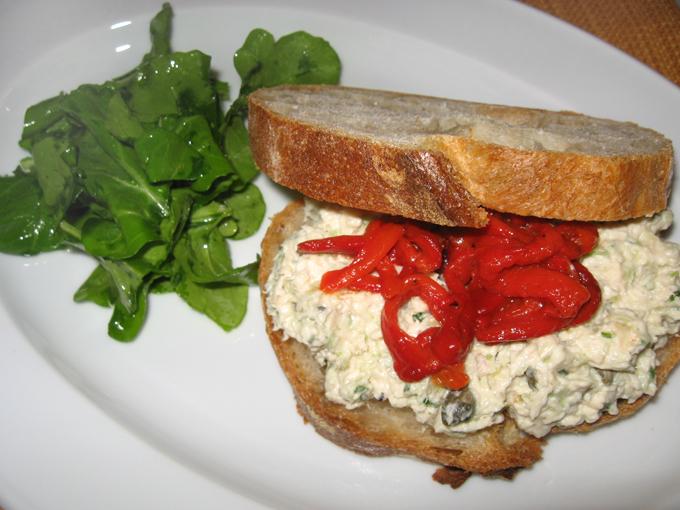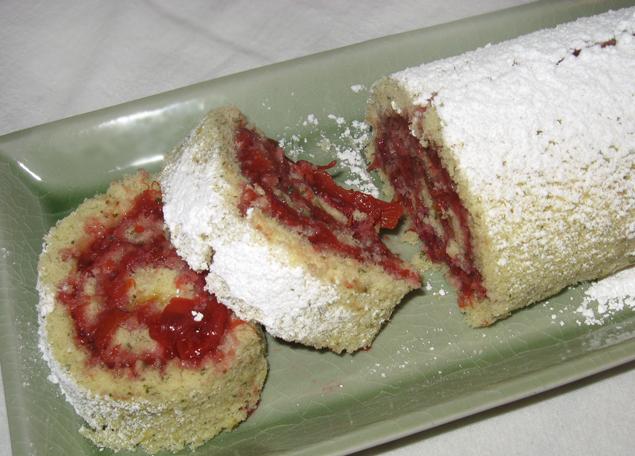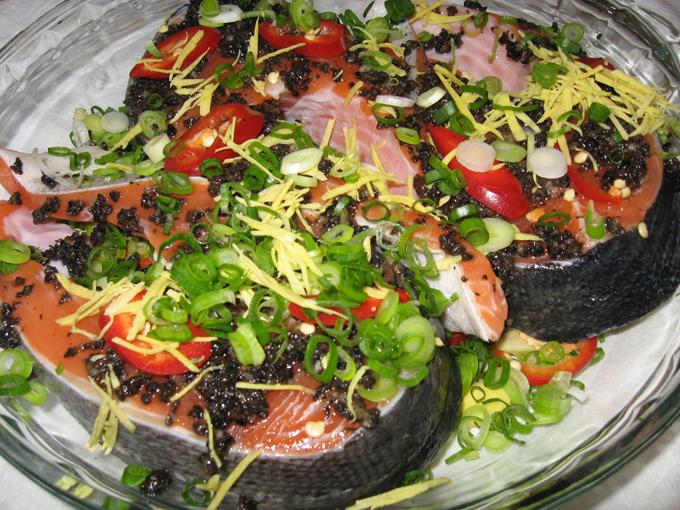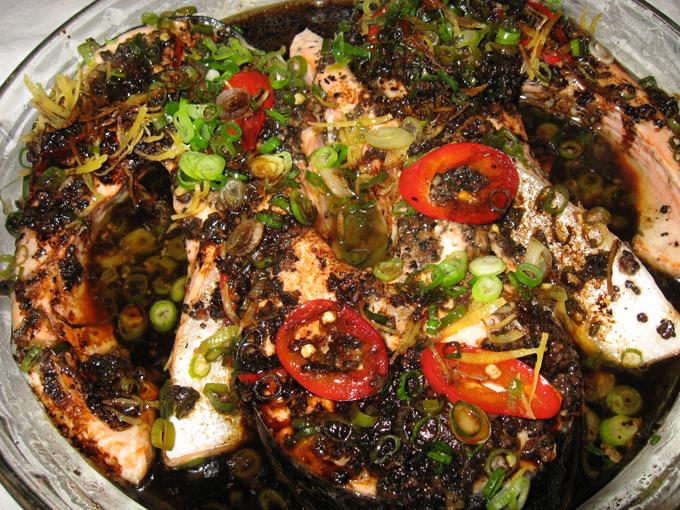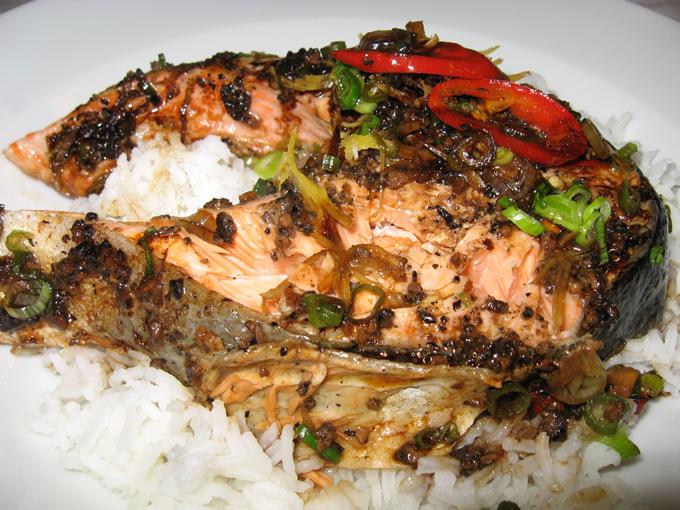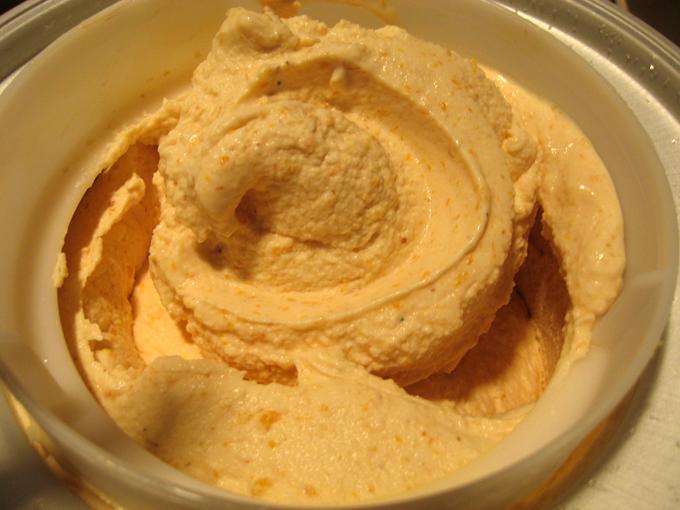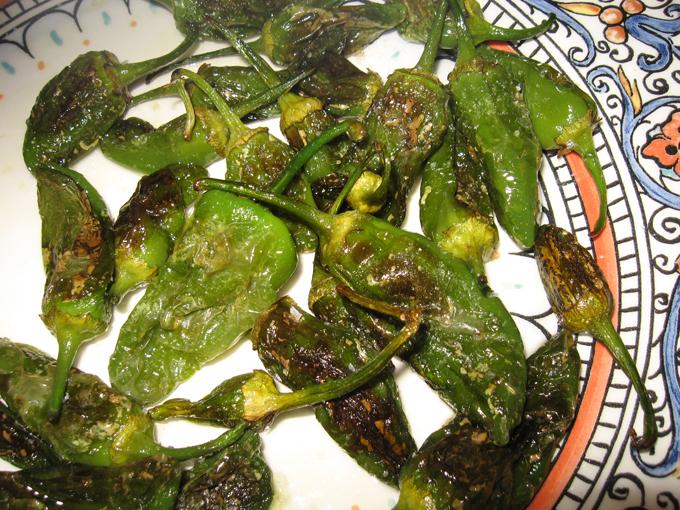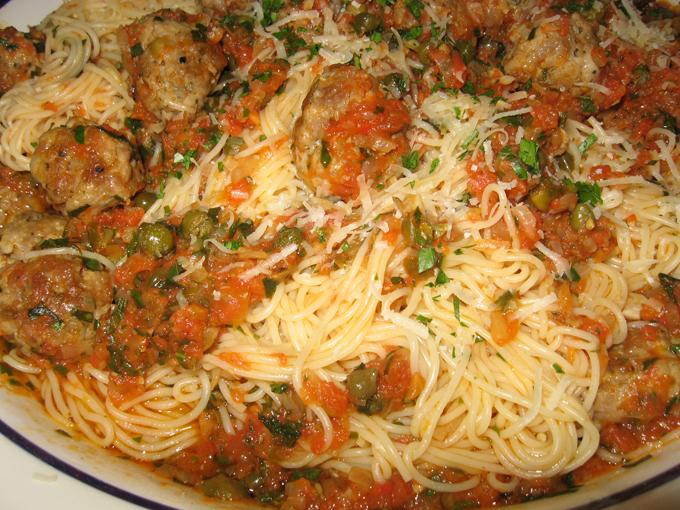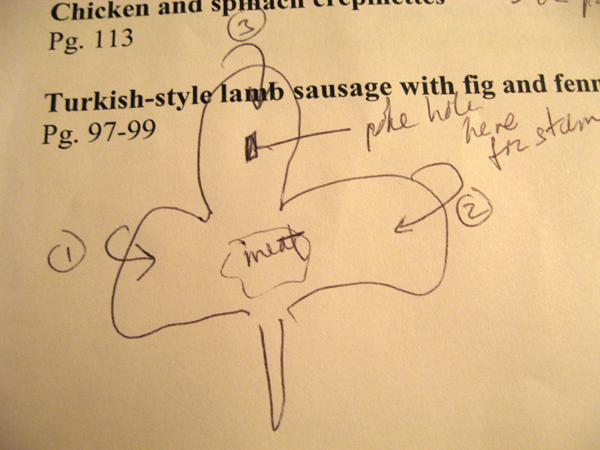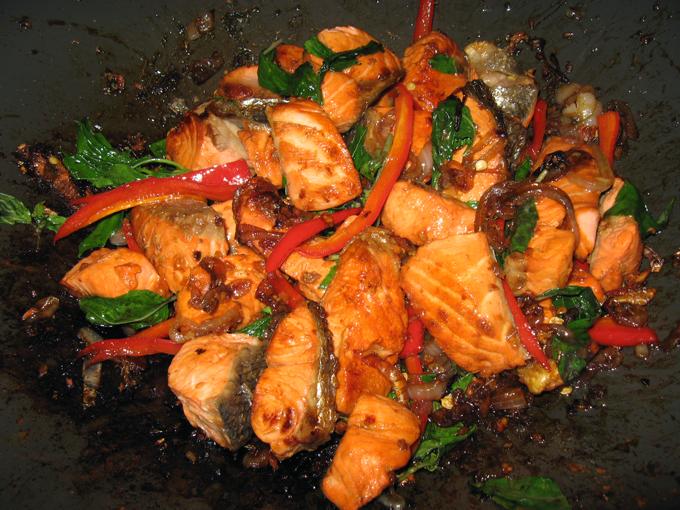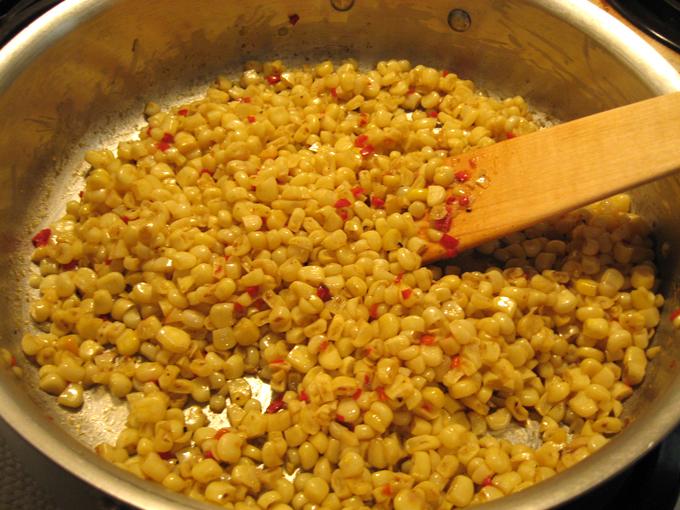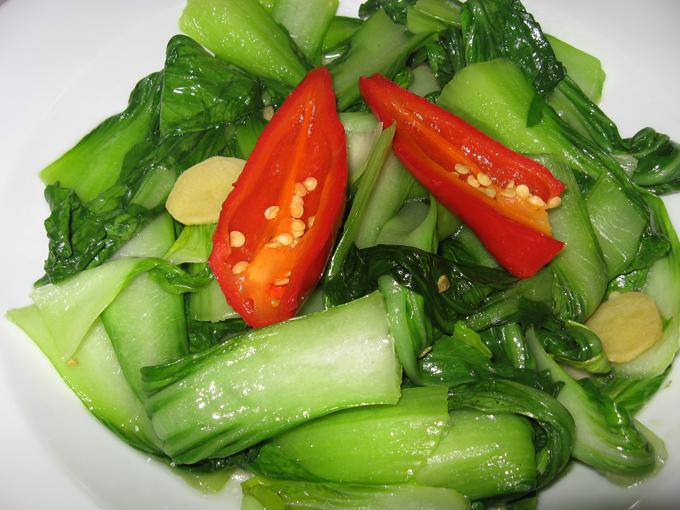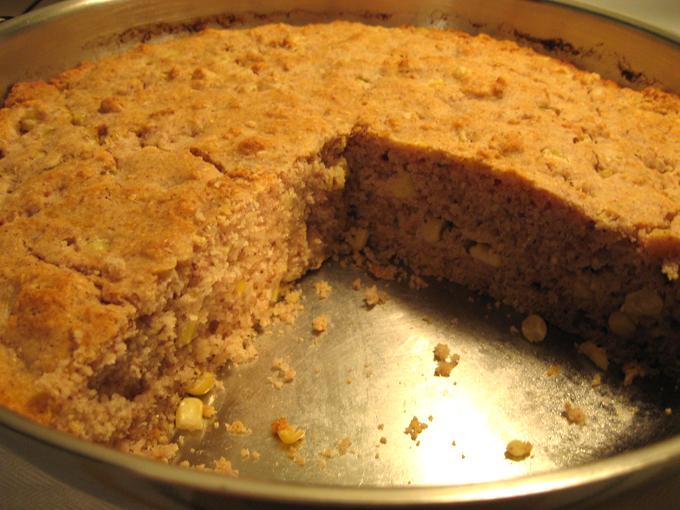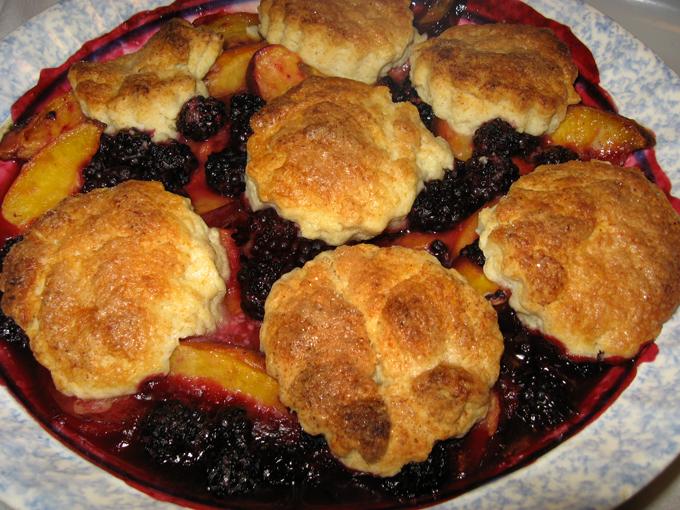-
Posts
1,729 -
Joined
-
Last visited
Content Type
Profiles
Forums
Store
Help Articles
Everything posted by djyee100
-
Roasting or microwaving the pumpkins is the way to go, if the resulting puree would be satisfactory and you have limits as to how much you will fool around with these pumpkins. But if you feel like giving a knife skills show to these kids, you can try the technique below. Also, this method is handy if you have to steam or boil chunks of pumpkin for a recipe. I originally wrote this blurb for my CSA newsletter. It's about squash, but the same cutting technique applies to pumpkin. How to trim fresh squash: Cut the squash in half lengthwise, top to bottom. Tap your knife lightly with a wooden mallet if your knife is not going through. Scoop out the seeds with a melon baller. Lay each half of the squash cut side down on your board, and slice into half moons. Then lay each half moon flat on your board, and slice off the peel with your chef's knife. (This goes faster than you think.) Alternatively, peel each half moon slice with a vegetable peeler. Then cut each slice into cubes or pieces for cooking.
-
A recipe for carrot marmalade from the Shakers, who always had tons of vegs and fruit to preserve. I've never tried this marmalade, but that carrot-orange combo should taste good. Or you could make a batch of carrot-orange soup, which I have cooked with tasty results. Shaker Carrot Marmalade: In a large saucepan combine 3 cups pared, chopped, cooked carrots; 2 TB grated lemon rind; 1/3 cup lemon juice; 3 TB grated orange rind; 1/2 cup orange juice; 6 cups sugar. Cook slowly for 45 mins or until it jells when you test it. Skim off any foam, pour into sterilized containers & seal. Yield about 1 quart. My adapted recipe from The Best of Shaker Cooking by Amy Bess Miller and Persis Fuller. For something more exotic, you can try the Parsi Wedding Pickle from Niloufer King's My Bombay Kitchen. It's on Googlebooks, page 238: http://books.google.com/books?id=mvECWRx4SkkC&pg=PA238&lpg=PA238&dq=niloufer+king+pickle+parsi+wedding+feast&source=bl&ots=_M74bmapJ3&sig=nfVvz_Ug6hsPopDi1UpjN6jVZVI&hl=en&ei=S4C_TILTM4qksQOx6IH_BA&sa=X&oi=book_result&ct=result&resnum=2&ved=0CBYQ6AEwAQ#v=onepage&q&f=false I've never tried that recipe. I did cook a simpler Parsi-style carrot pickle with dried fruit some years ago. Delicious, and also quite spicy. It paired well with a coconut milk curry.
-
I haven't made this one in years, but it was a big hit back when I first learned how to cook it. Made with baby back spareribs, not pork belly, and includes red bean curd. As long as you prep the pork belly, I'm guessing you can sub it for the spareribs. Probably not exactly the same sauce as you enjoyed years ago, but this recipe can give you something to play with. Shanghai Red Braised Spareribs 2 lbs meaty pork baby back spareribs 3 TB red "wet" bean curd 1/4 cup Shao Hsing rice wine or dry sherry 2 TB soy sauce 2 TB dark soy sauce 2 TB hoisin sauce 3 garlic cloves, bruised 6 quarter-sized slices of fresh gingerroot, bruised 2 1-inch chunks of rock sugar or 2 TB light brown sugar 1 star anise 1 tsp red rice (optional) Trim, cut, and separate the spareribs into 3" riblets (your butcher can do this for you; or at least cut the spareribs into 3" strips). Bring a pot of water to boil, drop in the ribs, and parboil the ribs for 3 mins. Drain well. Set aside. In a 2-quart sand clay pot or dutch oven, combine the rest of the ingredients. Mix well. Bring to a boil over medium-high heat. Stir in the ribs. Pour in enough hot water to cover the ribs, about 1 1/4 cups. Bring to a boil, then reduce to a simmer. Cover and cook for 1 hour, stirring occasionally, until the meat is tender and starts to fall off the bone. At the end of cooking time the sauce should be a glaze on the meat. If the sauce is too liquidy, remove the ribs from the pot, keep warm, and reduce the sauce to a glaze over medium-high heat. Return the ribs to the pot, and stir to coat. Serve hot over steamed rice. My adaptation of a recipe from chef Joyce Jue ( http://www.joycejue.com/ ). Note: You can find red "wet" bean curd in jars in Asian groceries, in the same section as the other kinds of fermented bean curd in jars.
-
If you haven't already, check out the the history of Indian pudding at Durgin Park restaurant in Boston. My aunt and uncle took me there when I was a kid in the 1960s. No gentility then. The dining room was no frills, loud, and crowded. When my dinner of pork chops and mashed potatoes came, I never saw so much food on a single plate. Indian pudding was a signature dish there--it's supposed to cook long and slow in a clay pot. Back then the restaurant had a little brochure with info about Indian pudding--how it's supposed to cook a long time, how the then-owner James Hallett was approached by young whippersnapper with a method for cooking the pudding only one hour (sacrilege), how a little old lady customer came once a week to eat 2 mammoth orders of Indian pudding, nothing else--things like that. I remember cans of Indian pudding for sale in Boston supermarkets, too. Myself, I can't stand Indian pudding. I don't remember where I first (and last) tried it. That strong taste of molasses did me in. Sorry.
-
I suggest Cline Cellars in Carneros, though I haven't been up there in years. But I enjoyed my last visit with a friend. The place is charming, and the wine is a good value (or at least it has been when I've tasted & purchased it). I suggest that you check out the Small Berry Mourvedre and the Marsanne Roussanne. http://www.clinecellars.com/ When out-of-towners visit, I also mention the Matos Cheese Factory for an old world experience. http://www.yelp.com/biz/matos-cheese-factory-santa-rosa It's near the Gravenstein highway. Harvest must be over by now, but there must still be some gravenstein apples knocking around at the farms there. I was last in the area in August, & bought some apples, which deliciously scented my car all the way home.
-
That is correct. I meant to say, before the EGullet computer threw me out of Editing mode so I couldn't finish my changes: That is correct. That is the principle of canning, where the vacuum seal clearly creates an anaerobic environment at risk for botulism. It's not clear to me what process is going on with your Indian oil pickles, whether oil pickles present an anaerobic environment at risk for botulism, and how canning principles apply here, if at all. Just saying this to put things in perspective.
-
That is correct. Are you including lactic acid fermentation in your question? Because that anaerobic fermentation is another game entirely, as I learned on this EGullet thread: ETA: Edited out part of the response because I misread Jenni's last post. BTW, I'm not convinced that oil pickles create an anaerobic environment that's conducive to botulism. I'm not saying yea or nay. I'm saying that from the evidence available, I'm not convinced there's a problem here.
-
You have to make the distinction between the spores of the bacteria and the toxin they produce when they grow. This is the rule of thumb I learned when I was taught how to can: Botulism requires an anaerobic environment, most commonly achieved by the vacuum seal in canning. However, certain environments will prevent and inhibit the growth of the spores (& the resulting toxin), namely environments with sufficient levels of --alcohol --acid --salt --sugar If the spores do grow, they produce a toxin that can be destroyed by boiling. However, with most preserves, people don't boil them--they eat them straight from the jar. The spores exist in the ground and show up naturally on foods. You cannot rely on destroying them by normal boiling temperatures. Instead, to destroy the spores, it's necessary to use a pressure canner with extra-high temperatures. In short you have 2 choices to prevent botulism, assuming the basic requirement of an anaerobic environment is present: (1) create an inhospitable environment for growth of the spores (& resulting toxin) with sufficient alcohol, acid, sugar, and/or salt ; or (2) destroy the spores from the get-go with a pressure canner. From Harold McGee's On Food and Cooking: When I've cooked oil pickles, I've made small batches, didn't bother to seal them, and kept them in the fridge. So my practical experience can't help with your particular question.
-
Bruce, I like the Shrimp Fried Rice, and the Chicken Cacciatora too. I give both dishes a 10. Kim, a luscious pot roast! Tonight, a quick dinner, Chicken Salad Sandwiches with Green Salad. Today's greens were arugula with vinaigrette. Some leftover roasted red bell peppers in the fridge, so I sprinkled them on as a garnish. They went well with the chicken salad. I frequently make this chicken salad, especially on busy days. I stop by the market for a cooked chicken to give myself a headstart. To make this Chicken Salad: Finely chop 2 cooked, boneless, skinless chicken breasts (about 1/4" dice), and combine with 1 scallion, finely chopped; 2 celery stalks, finely chopped; 1 TB capers, rinsed, dried, & coarsely chopped; S&P; 1/2 cup mayonnaise, or to taste; & if desired, a spritz of fresh lemon juice. The food processor on Pulse preps the chicken and celery--I chop them separately. The scallion and capers I chop by hand. This chicken salad has a velvety texture like tunafish salad, and that's one of the pleasures of eating it. My variation of a recipe in Alice Waters' The Art of Simple Food. A special dessert tonight, Lemon Verbena Jelly Roll with Nectarine Raspberry Preserves. The recipe has been hanging around my house for years. I cooked the nectarine-raspberry jam a few weeks ago, and tracked down some fresh lemon verbena yesterday. Hence the cake today. The cake is simply a genoise with some lemon verbena folded into the batter (about 2-3 TB finely chopped fresh lemon verbena leaves for a standard 15"X10"X1" cake). The herb-y cake and tart jam are a tasty combo. Both the jam and cake recipes came from Lynn Alley. After taking the pic, my eye alighted on the last line in the recipe: "After rolling up the cake, allow to set." Too late. But you get the idea. Tomorrow I share the baking largesse with some neighbors.
-
I'm a fan of beef short ribs. Like many tough cuts, they have great flavor--you just have to cook 'em right. My fave for beef short ribs, Alice Waters' recipe for Braised Beef Short Ribs with Gremolata. The gremolata goes surprisingly well with beef. The recipe is here: http://www.foodista.com/recipe/2NLBKBTR/braised-beef-short-ribs-with-gremolata If you can track down James Oseland's Cradle of Flavor cookbook, there's a recipe for Javanese Spiced Oxtail Stew, for which you can sub short ribs. The meat is cooked with ginger, cinnamon, cloves, and nutmeg. That dish is another winner.
-
It's a sad commentary on the Sunday dinner when this topic is posted for 24 hrs and nobody responds. One of my friends (retired, single, no kids) cooks Sunday dinner every week for her sister and brother-in-law. When she told me about it, I thought it was such a great idea. She touches base with her nearest family every week, and she gets to stretch and practice her cooking muscles too. She's a phenomenal cook. Every time I mention a dish, she's tried to cook it at some time or other and has comments to make about it. I'm guessing that her family are willing and happy guinea pigs! For myself, I have a small group of friends that try to meet regularly once a month, for coffee at least, if not for potluck dinner. We've just canceled our 2nd monthly mtg in a row. At least one person is unable to attend for any given date, I swear it. Every time we email our schedules to each other, I feel I should open a spreadsheet in Excel to figure it out. I suspect my experience is not uncommon... good luck, Sachi, I hope you can pursue your idea in other venues.
-
I haven't owned a crockpot for years. I gave my last one away. I don't like the steamed or boiled quality of the meat, and the need for thin, small veg pieces in order to cook properly. Fortunately, I have more flexibility in my cooking time, so I always opt for slow cooking in a conventional oven. If I did own a crockpot, I would cook beans, including dal, in it. I think the crockpot is ideal for that. One day my neighbor was cooking dal in his crockpot, and it smelled so good I asked for the recipe. It's online here, dated 5/9/10, post #34 (scroll up): http://community.cookinglight.com/showthread.php?p=1566034
-
It sounds like there are no water fountains or such in the school cafeterias or dining rooms. I've seen water fountains at various locations in every California public school I've visited. So the situation is not lack of water. It's about getting up from your seat to go to the corridor to fill a glass or water bottle. More info here: http://articles.latimes.com/2010/sep/19/local/la-me-water-schools-20100920 I suspect that when most of the schools were built (1950s, 60s, 70s), kids were expected to drink milk at lunch. Or maybe Coca-Cola. Water has become a "healthy" desirable drink only in the last few decades or so. Nobody bothered to drink water when I was growing up, unless nothing better was available. How food fashions change... BTW, that number in the article, "40% of school districts that responded to an online survey said their students had no access to free drinking water..." may not be accurate or representative, since that sounds like a self-selected group to answer an online survey.
-
After 4 weeks the preserve should taste well-brandied and the fruits should have sunk low in the jar from all the sugar they have absorbed. The preserve I made a couple wks before yours has come out fine. I'm actually thinking of refrigerating the jar to slow down the preserving process, so that my preserve keeps more of the fresh fruit flavor. Neither I nor a friend who makes this recipe for vieux garcon has experienced your problem with "effervescence" or fizziness in the preserve. I speculate that there's too little brandy and white sugar in your mix, so that the sugar in the fruit has begun to ferment on its own. In step 2 of the recipe ("2- In a nonreactive pan large enough to hold all your fruit of the moment, combine equal parts of brandy and sugar. There should be enough brandy and sugar to later cover the fruit..."), I always put enough brandy and sugar in the pan so that the fruit is immediately covered when I drop the fruit into the pan. It sounds like you were letting the fruit simmer and release its juices, so that the juices were counted in as the quantity of liquid to cover. IOW, your preserve probably contains less brandy and white sugar than mine does, and proportionately more fruit sugar in the mix. It's the fruit sugar that's fermenting--I think. I admit the recipe was a little vague on the quantities of brandy and white sugar to put in the pan (so was the original recipe I adapted ). This blog has an adapted recipe for vieux garcon, with quantities given for brandy and sugar. Perhaps it will be useful for guidance. http://creativeliving.10.forumer.com/viewtopic.php?t=3622&sid=801627e7d8f1ae9975f110aa3fd295ca So what do you do now? If I were you, and unwilling to toss the jar, I would cook up a batch of brandy and sugar, and add it to the jar. Maybe that will stop the effervescence if you put in more preservatives. As long as the fruit smells and tastes OK to you, I'm assuming it is OK to eat. Or you can start over with some fall fruits, apples, pears, and grapes. The late-summer peaches and plums are looking good at the market here. Perhaps you can add in some of those as well. Let me know how it goes.
-
On busy days I rely on dishes that are very fast or very slow. The very fast are pastas and stirfries. While the pasta or rice is cooking, I prep the meat & veg, then do whatever quick cooking is necessary. While prepping I start munching on raw vegs, and believe me, that helps ease the hunger pangs! The very slow are braises, stews, and hearty soups. Those are cooked at least the day before, & they actually taste better with 24 hrs to mellow. As others have said upthread, not everybody wants to cook after dinner. But I find it relaxing recreation. I cook more patiently when I'm not hungry and anxious to get a meal on the table. Braises in particular can be assembled quickly. Sometimes I don't bother browning the meat. I simply set the meat on the bed of vegs & cook the braise in the oven. At the end of cooking time I drain off most of the juices and pop the pan back into a hot oven, 400-450 degrees, for about 10 mins. The cooked meat browns beautifully. I suggest that you look into the variety of Asian-style steamed dishes that are possible. My mother worked full-time, and often cooked Chinese steamed dishes for dinner. Now I know why. Those dishes are quick to assemble and usually quick to cook. They don't take much tending, either. Fish fillets with a sauce of garlic, ginger, soy, & green onions can take only 10 mins to steam before the dish hits the table. If you have a steamer with multiple racks, you can cook a meat or fish dish on the bottom rack, with a veg side dish on an upper rack. Think of the multi-level steamer as an oven, with the hottest area closest to the water--there are many possibilities for cooking an entire meal in a steamer. Once a friend made a hearty dinner soup of Trader Joe's potstickers in chicken broth with veg & shittake mushrooms. It was very filling and very good! Like a super-wonton soup.
-
I'm reminded of Peter Reinhart's discussion of crust to crumb ratios in breadmaking. Do you like the crust most, or that soft bready interior (crumb)? I guess the same kind of exterior vs interior discussion could apply to quiche. I'm a crust person for bread, I'm a crust person for quiche. I make my quiche in a French metal tart pan, less than 1" thick. Years ago I baked a thicker quiche, in a 3" deep tart pan I specially bought to experiment. I did that once. The thicker quiche didn't appeal to me. Forget the custard, I want crust! The pan is still sitting at the back of the highest cabinet in my kitchen.
-
Just to clarify, the copyright protects the "tangible form," not the idea(s). Ideas are not copyrightable. E.g., I can take your recipe, list the same ingredients, rewrite your instructions, and stay on the right side of the law. (Whether that's ethical without attribution is another question.) As you mentioned, a copyright notice is not necessary. Copyright attaches as soon as you fix your idea(s) in a tangible form. However, a copyright notice reminds people that the work is owned and should not be copied without permission. Common phrases are not copyrightable (the Pim controversy falls into this area, IMO). Further, if there are only a few common-sense ways to say something, those common phrases or sentences--boilerplate if you will--are not copyrightable. That's only a rule of thumb. The courts decide on a case by case basis what is or is not protected by copyright here. As you mentioned, the fair use exception allows copying some material for the purpose of furthering a discussion. The courts have limited the fair use exception to that material strictly necessary for the discussion (they apply other factors in determining fair use, also; I won't get into it). To stay on the safe side, copy or quote only the minimum necessary to make your point, and of course give your source. When I've had discussions with people about copyright protection and the web, I always end by saying this: There's the law, and there's reality. Don't put anything on the web unless you accept that it may be copied and used without your permission. People aren't necessarily malicious, but they can be ignorant or careless about copyrighted material.
-
I've only tried mustard oil once, in a fish pitika recipe of Assam origin. The mustard oil has an unusual taste. The person who taught me the recipe cautioned that mustard oil is slightly toxic (as I recall, it's related to mustard gas). I was taught to heat the oil until it smokes, remove it from the heat and let cool for a minute, then proceed to use it in the recipe. This process is supposed to detoxify the oil. Ventilate your kitchen well when you do this, of course!
-
That's a lot of pears! Are you sure you won't be canning this year?? Some other suggestions... -- A pizza topping of pears, gorgonzola, and walnuts. You could try this topping on focaccia too. When the bread comes out of the oven, brush the crust with some high-quality olive oil. You can also heat some honey in a small pan, until the honey thins out, and brush the pears with it--again, when the bread comes out of the oven. -- I've cooked a fusion-style Asian pear and duck tostada, with greens and hoisin sauce, from Beverly Gannon's General Store cookbook. Bosc pears would be a fine substitute for the Asian pears. A complicated restaurant recipe, but perhaps it can give you some ideas. Available on Googlebooks, page 13. http://books.google.com/books?id=hUK0obUbHHYC&pg=PA13&lpg=PA13&dq=beverly+gannon+general+store+asian+pear+duck+tostada&source=bl&ots=p-y7XLTmii&sig=xt_eY_b6linVzb6VtX9HMPdy844&hl=en&ei=m2yeTJa4EpC2sAP9yNXVAQ&sa=X&oi=book_result&ct=result&resnum=2&ved=0CBgQ6AEwAQ#v=onepage&q&f=false ETA: Besides the chutney, you could consider pear butter to handle your volume of pears. I recently overbought apples at the farmers mkt, so I made some apple butter. 3+ lbs of apples cooked down to a scant pint of apple butter. It was delicious. I had forgotten how great homemade fruit butter can be.
-
Prawncrackers, I like that grilled lamb with eggplant & peppers & zatar. Looks delicious. For last night's dinner, one of my favorite ways to cook salmon, Steamed Salmon with Black Bean Sauce. Salmon steaks are steamed with fermented black beans mixed with garlic, slivered fresh ginger, green onions, and fresno chile. At the end of cooking time the fish is doused with dark soy sauce, followed by a generous pour of hot oil to create a glaze. The fish is prepped, and ready to be steamed. Out of the steamer, topped with dark soy sauce followed by hot oil for a glaze. Served with steamed rice. A dessert of Philadelphia-style Peach Ice Cream. Great as a soft-serve ice cream, straight from the machine. I like this Philadelphia-style peach ice cream better than most custard-based peach ice creams I've tried. My only regret--it's the end of peach season! But there's always next summer. To make Philadelphia-style Peach Ice Cream: Puree 3 large, peeled, diced peaches with 3/4 cup sugar in a food processor. Combine with 1 cup cream, 1 cup milk, 1 tsp vanilla extract, and 1/4 tsp kosher salt. Chill the mixture well and freeze in an ice cream maker. Serve immediately, or pack in a chilled container and let harden in the freezer.
-
Wonderful meals, everyone. Robirdstx, I could dive into that Sausage & Mushroom Pizza. The crust looks great. David Ross, the sticky rice in lotus leaves looks delicious. I wish I had one of those right now. Dcarch, I've never tried cutting citrus like that. I love the colored shapes of the fruit. It would make a fine garnish. Thanks for showing us in the pix. For last night's dinner, a starter of Sauteed Padron Peppers. The recipe for the peppers--such as it is, it's pretty simple!--came from Alice Waters' In The Green Kitchen. I sauteed the peppers in olive oil over medium heat, moving them around frequently, until the peppers softened and the skins blistered. Then I sprinkled them with coarse salt and served them hot. The padron peppers are fun to eat, because some are hot, but some are not. So you're always wondering what the next pepper will be like (and eating more of them as a result). These peppers tasted even better with a cold beer. I bought a load of tomatoes at the farmers mkt, thinking that I would make panzanella, but the weather cooled here so I switched the menu to a comfort food classic, Spaghetti and Meatballs. This version has Italian sausage meat formed into quick meatballs, and a sauce of fresh tomatoes with garlic, shallots, capers, basil, and parsley. To make Spaghetti and Meatballs: Form small meatballs out of 1 lb Italian sausage meat (remove casings). Heat some olive oil in a 10" saute pan, and brown the meatballs over medium heat. Remove from pan. Add 1/4 cup olive oil to the pan, heat, and toss in 4 chopped garlic cloves and 4 chopped shallots. Cook over moderate heat until soft and translucent. Add in 3 TB capers, rinsed, drained & coarsely chopped. Let cook until the garlic and shallots are lightly golden. Pour in 4 cups peeled, seeded, and chopped fresh tomatoes (heirloom tomatoes taste great in this sauce), plus 2-3 TB olive oil. Bring to a simmer and cook for about 10 mins, stirring occasionally. Towards the end of cooking time, return the meatballs to the pan and let them finish cooking in the sauce. About a minute before the sauce is done, stir in 1/2 cup chopped fresh basil and 1/4 cup chopped fresh parsley. Season with salt and pepper. Meanwhile, as the sauce is cooking, boil 1/2 lb angel hair pasta until done; drain & set aside. To serve, pour the meatballs and sauce over the hot pasta in a warmed serving bowl. Toss lightly. Garnish with chopped fresh parsley and grated parmigiano-reggiano cheese. Serve immediately.
-
I was flipping thru Alice Waters' The Art of Simple Food, and this paragraph caught my eye, in a the Baked Wild Salmon recipe: Bake in a 425 degree oven. Or you can grill the wrapped fish too. In this recipe the cooked fish is garnished with a dollop of herb butter. In a recent workshop I attended, Victoria Wise demo'd sausage wrapped & grilled in fig leaves. This is my sketch in my notes. The sketch doesn't look that much like a fig leaf, so pls use your imagination. -- Place the fig leaf on a board, the stem pointing towards you. Place some meat, fish, or other filling in the center of the leaf. (1) and (2) Fold in the sides of the leaf over the filling. (3) Poke a small hole in the top part of the leaf, then fold over the filling. Push the stem thru the hole. It should stick and hold the roll together like a toothpick. The recipe for the Turkish lamb sausage, served with fig marmalade, is on Googlebooks, page 97. Scroll down for a pic. http://books.google.com/books?id=ABkfNxwy708C&pg=PA97&lpg=PA97&dq=victoria+wise+turkish+lamb+sausage+with+fig&source=bl&ots=9fMzgwPRpo&sig=7B0zaY0s1Lli0XMurKyrX6PNTmo&hl=en&ei=p8KJTK_PLY_4sAOkhJS9BA&sa=X&oi=book_result&ct=result&resnum=1&sqi=2&ved=0CBIQ6AEwAA#v=onepage&q&f=false If you really want to do something different, try making Fig Teleme cheese, by the "ancient method," in Paula Wolfert's Mediterranean Clay Pot Cooking. The two ingredients are: 1 quart goat's milk and "1 freshly cut fleshy 8- to 9-inch branch from a yellow fig tree with 1 slightly underripe yellow fig attached." The second ingredient is a hurdle for most people, but not for you. The fig tree sap and the unripe fig ferment the goat's milk to produce a mild cheese. The recipe is on Googlebooks, page 285 in the cookbook: http://books.google.com/books?id=nSs7ntO2f5IC&pg=PT368&lpg=PT368&dq=paula+wolfert+fig+teleme+ancient+method&source=bl&ots=MPVysCp-mx&sig=wyfki9p50Zn_br5L69O58Zna4qg&hl=en&ei=nsSJTIH2GoiesQPkvYyTBA&sa=X&oi=book_result&ct=result&resnum=1&sqi=2&ved=0CBIQ6AEwAA#v=onepage&q&f=false If you make this cheese, pls let us know how it goes.
-
Wonderful video. Thanks so much! Pls tell me about the juniper ice cream. Was it made from cream infused with juniper berries?
-
That's a lot of food, and a lot of different flavors coming at people. How about something simple for the fish course, to give people a rest? I suggest Julia Child's recipe for Fish Filets Poached in White Wine. It's in her Mastering the Art cookbook. I make the dish with sole filets, folded in half into triangles. That presentation is surprisingly attractive. The recipe is tasty and straightforward to cook, too. If you want to do a fish in pastry, you could try some kind of fish in strudel. Beverly Gannon has a salmon strudel in her General Store cookbook, which I've never cooked (only drooled over). It's probably too heavy for your dinner, but maybe the recipe can give you some ideas. On Googlebooks, Page 21. Scroll up to Page 20 for a pic. http://books.google.com/books?id=hUK0obUbHHYC&pg=PA21&lpg=PA21&dq=beverly+gannon+salmon+strudel&source=bl&ots=p-y5-P-dld&sig=lYnaROL_Qf4WksmykH12YKxpIII&hl=en&ei=sLqGTJSUE5L0swOFyaisCg&sa=X&oi=book_result&ct=result&resnum=1&ved=0CBQQ6AEwAA#v=onepage&q&f=false
-
An eclectic mix of dishes for dinner lately, as I try to take advantage of abundant summer fruit, sales at the market, and the contents of my CSA box. Salmon was on sale, so I bought a big piece for a quickie dinner of Thai Basil Salmon. This is basically the same as the Thai Basil Chicken recipe that I posted upthread. I substituted 1 lb salmon chunks for the chicken, and red fresno chiles for the serranos. The recipe is here, my post #23875, dated 2 July 2010: I borrowed Alice Waters' newest cookbook, In The Green Kitchen, from my public library, and I've been cooking from it. Various side dishes and a dessert from the book have shown up on the dinner table in the last week. I haven't decided whether or not to buy the book, though I like everything I've cooked from it so far. This Sauteed Corn with Chile didn't look like much when I finished it in the skillet, but then I tasted it and it packed a punch. Very good! And very spicy with toasted cumin, fresh chile, and black pepper. To make Sauteed Corn with Chile: Toast 1 tsp cumin seeds in a pan, let cool somewhat, then grind it in a spice grinder. Chop 1 large clove of garlic. Seed and chop 1 fresno chile pepper. Cut the kernels off 4 ears of corn, for approx 4 cups of fresh kernels. In a 10" saute pan over medium heat, add 2-3 TB olive oil and the garlic. When the garlic is sizzling, toss in the ground cumin and the chile pepper. Let cook for a minute until the mixture is slightly golden and fragrant. Add in the corn kernels, stir occasionally, and let cook for 3-4 mins until done. Season with salt & pepper. My variation of a recipe in Alice Waters' In the Green Kitchen. There's a cooking video of the original recipe online: http://alicewatersgreenkitchen.com/Episode02.html Still flipping through the book, I decided to try Greens with Ginger and Chile. This recipe may be of Indian origin (I'm guessing from the blurb in the cookbook). The fresh ginger and chile flavors infuse the greens. The greens smell wonderful, and they're not too spicy. The recipe calls for amaranth greens. Never heard of them. But I had plenty of bok choy in the fridge, and that went into the pan. The recipe for Greens with Ginger and Chile is here. These greens are a welcome change from the usual Asian stirfried greens in my house. http://www.chron.com/disp/story.mpl/life/food/7042384.html The last of the fresh corn from the market (on sale, 5 ears for $1, & locally grown!) went into Cornbread from In The Green Kitchen. I baked this recipe with some blue cornmeal that's been hanging around my freezer, an heirloom variety called Blue Hopi. The raw cornmeal is blue-ish, but it bakes up to a more appetizing tan color. I usually don't add fresh corn into cornbread, because the cornbread comes out too heavy. But this recipe produced a cornbread with a light texture and good flavor. To make this Cornbread: Preheat oven to 375 degrees. In a large bowl, combine 1 2/3 cups cornmeal, 1 2/3 all-purpose flour, 2 1/2 TB sugar, 4 tsp baking powder, 1 1/2 tsp salt. In a smaller bowl, combine 2 eggs with 1 2/3 cup milk. Melt 1/2 cup (1 stick) unsalted butter in a small saucepan. Cut off the kernels from 2 ears of fresh corn, for about 2 cups of kernels. Add the egg mixture to the cornmeal mixture, then stir in the melted butter and corn kernels. Do not overmix. Heat a heavy 10" ovenproof pan or skillet over medium-high heat. Add 2 TB butter to the pan, and move the butter around so that it melts and greases the inside of the pan. Pour in the batter. Bake in the middle of the oven for about 35 mins until the top and sides are golden and a toothpick in the center comes out clean. Let cool for at least 5 mins before cutting and serving. My variation of the recipe in Alice Waters' In the Green Kitchen. I've overbought fruit at the farmers market, because the late season summer fruit looks so good, so I decided to unload a bunch of nectarines and some blackberries into a Nectarine and Berry Cobbler. I served the cobbler with a pitcher of cold cream at the table. It tasted great. The recipe for this cobbler comes from In The Green Kitchen. A basic recipe is also in The Art of Simple Food. Nectarine slices and blackberries are tossed with sugar, flour, lemon zest, and lemon juice, then topped with cream biscuits. I made a half recipe to fit a 9-inch ceramic pie pan. The recipe is available on Googlebooks, Page 127, here: http://books.google.com/books?id=NA4w9AMKSfYC&pg=PT36&lpg=PT36&dq=alice+waters+nectarine+berry+cobbler&source=bl&ots=6Dym_mDlwU&sig=UjuaNUkJqMLShtbk6oG2UwCB6iE&hl=en&ei=nguHTOb-EIL2swPE2oGbCg&sa=X&oi=book_result&ct=result&resnum=1&sqi=2&ved=0CBIQ6AEwAA#v=onepage&q&f=false For the Cream Biscuits, this blog has an adapted recipe: http://www.ezrapoundcake.com/archives/2796



